AMD’s 5 GHz Turbo CPU in Retail: The FX-9590 and ASRock 990FX Extreme9 Review
by Ian Cutress on August 9, 2014 8:00 AM ESTASRock 990FX Extreme9 BIOS
For those that have followed our Z87 and Z97 BIOS coverage, the ASRock BIOS for the 990FX Extreme9 falls very much on the side of Z87, which makes sense as the platform will probably not be seeing many updates, if any, for the foreseeable future. The main screen uses white text on a starry background, with the selected option very clearly defined.
In this main screen we have details of the motherboard name, the BIOS version, the CPU installed, the CPU Speed, the DRAM installed, the per-module density and the current speed of each module. Other information that would be good to have includes the main system voltages, temperatures and fan speeds. Note that ASRock has not yet implemented a system that contains this information across every BIOS screen, unlike some of their competition. On this screen is also an ‘Active Page on Entry’, useful for overclockers that want the BIOS to skip straight into the OC Tweaker menu.
The OC Tweaker menu, as the name suggests, has the overclocking options. ASRock like to add in some automatic overclock options, and here we get the choice from a 5% to a 50% overclock:
Typically the higher overclocks would be outlined in red to indicate an extreme overclock, but ASRock does not do that here. The rest of the OC Tweaker menu has the CPU configuration settings, DRAM Timing options and Voltage configuration. Load Line Calibration is a single option in the voltage section, and the DRAM Timing Control is a separate menu item for memory sub-timings:
The Advanced tab contains options for enabling/disabling controllers, adjusting SATA modes and implementing some power saving features. The Tool menu next is where ASRock has their more interesting features, such as System Browser that gives an overview of the motherboard and tells the user what is installed:
The Online Management Guard feature displays a timetable for the week and allows the user to disable the network features. One of the major purposes of this feature is for adults to restrict their children’s use of the internet at odd hours of the day.
The Dehumidifier function keeps fans enabled after the system has switched off in order to equilibrate the temperature inside the case with the temperature outside the case. In the event of warm, moist air in the case that cools in the evening, in humid climates this may cause condensation, hence this feature. There are also menu options to save user profiles within the BIOS underneath this setting.
The Fan Controls are how ASRock used to do them, in terms of ‘levels’, with the higher the level indicating how quickly the CPU fan power would ramp up. Some of the headers have the option of tying the fan power to the CPU temperature, meaning that if the CPU temperature rises above a value, the fan is placed on full speed until the target temperature is reached.
The BIOS finishes up with boot options and security. One missing feature from ASRock BIOSes is a boot override feature, allowing for a one-time boot from within the BIOS.
ASRock 990FX Extreme9 Software
The software for the Extreme9 is centered around the ASRock Extreme Tuning Utility, or AXTU for short. AXTU used to be the main interface, until A-Tuning came about for Intel’s 8-series motherboards, but due to the age of the motherboard (or perhaps incompatibilities) this software has not been upgraded.
The screen that pops up first with AXTU is the Hardware Monitor interface. This shows the CPU speeds, base frequencies and multipliers, as well as the fan speeds, temperatures and voltages. Two key bits of information missing are the CPU installed and the motherboard which is being used.
AXTU also is part of the fan control:
The fan controls here are similar to that in the BIOS, relying in the ‘level’ system to determine the gradient at which the fan speed is ramped up. Users can select a target temperature which will put the fan at full speed when the CPU is above the target.
The overclocking interface offers several simple options, although no automatic overclocking setups. Here we can adjust the base frequencies, the multipliers and the voltages, although nothing along the lines of load-line calibration.
AXTU also provides an interface to save the BIOS and some power saving features, but also XFast RAM. This feature allows the user to partition off some of the memory into a RAMDisk, and AXTU will also manage some caching options in order to speed up some of the operating system functions.
While ASRock has dropped XFast USB with the latest Intel 9-series motherboards, the software is here on the Extreme9 and implements newer USB protocols to increase peak transfer speeds at the expense of latency. In our copy tests, the XFast feature does provide a tangible benefit, although the feature is limited to one USB device at a time.
XFast LAN is a licensed and skinned version of cFos, which allows for software manipulation of network priority.



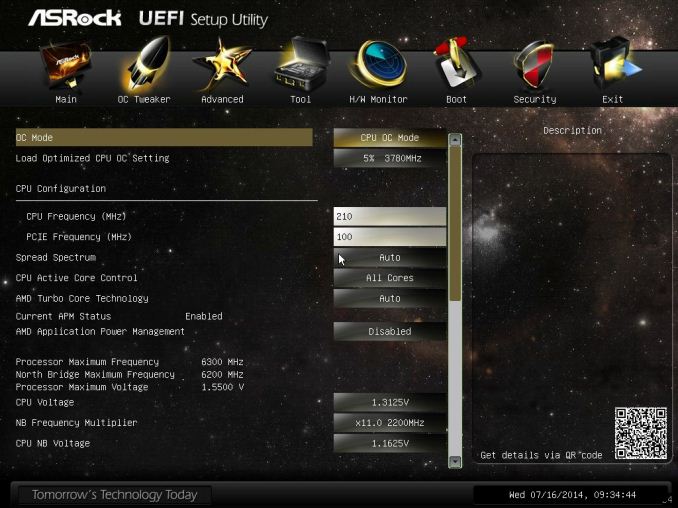
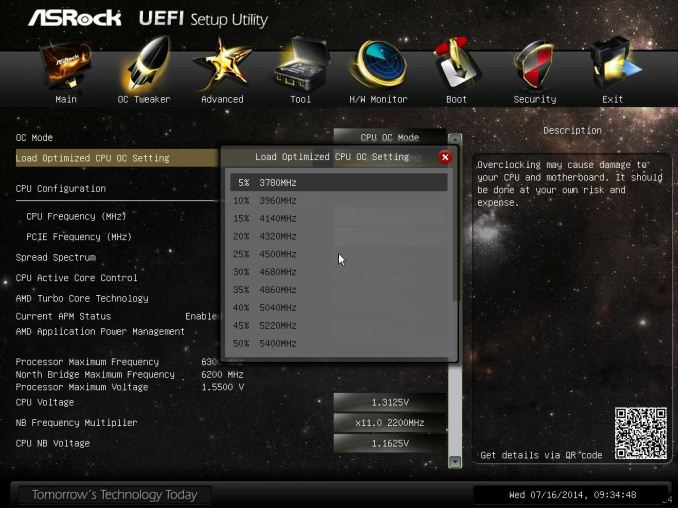
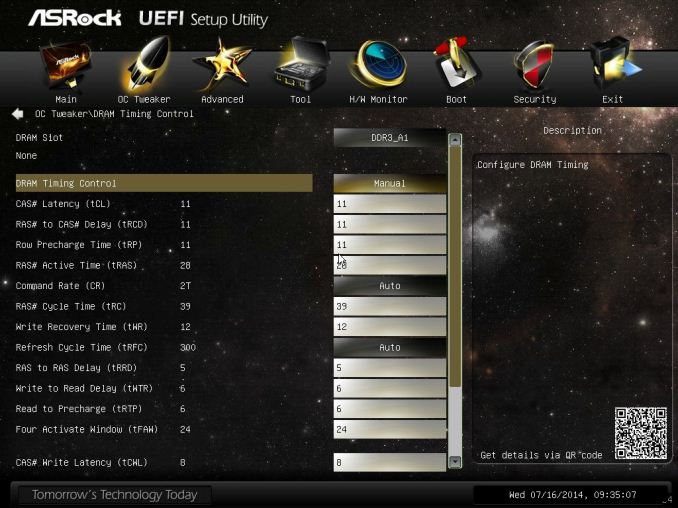

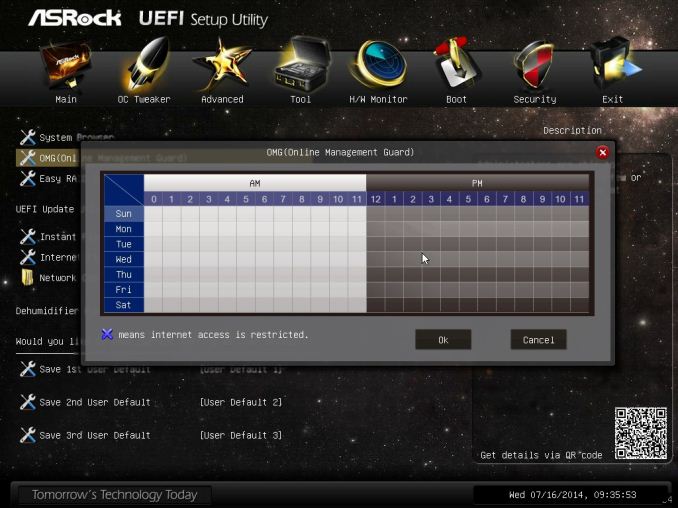

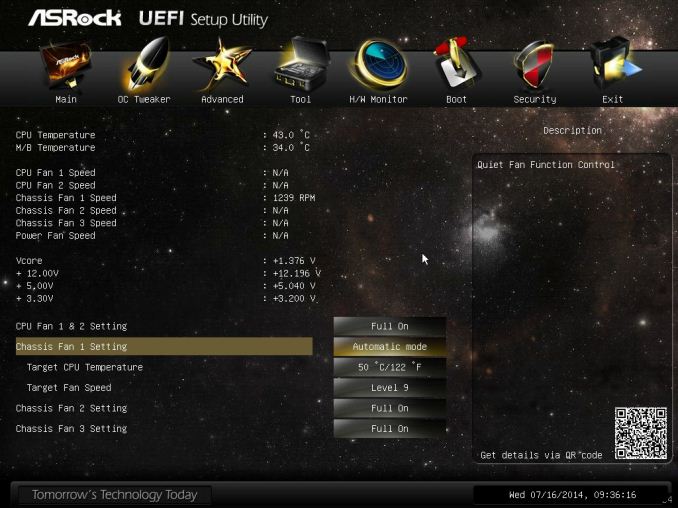







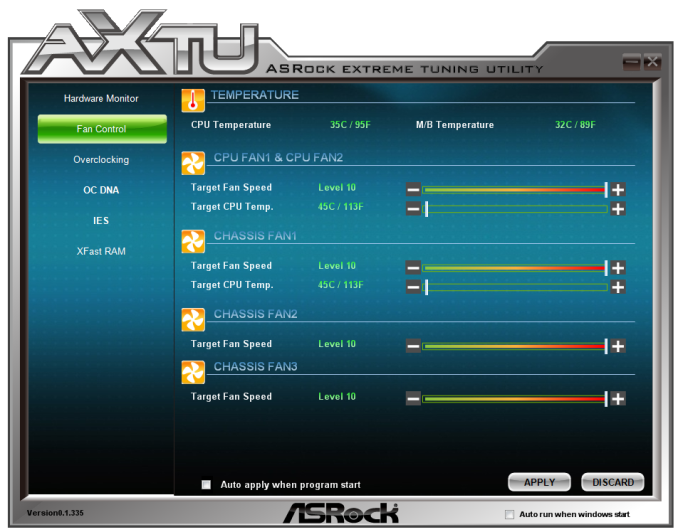
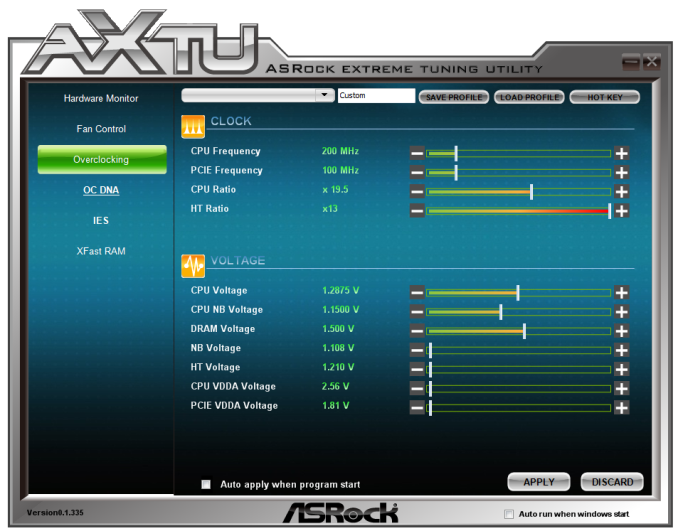

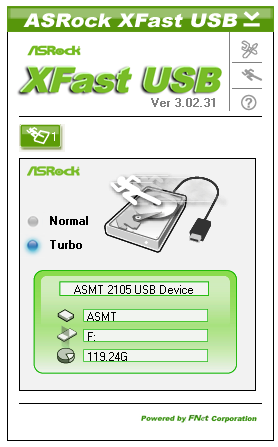
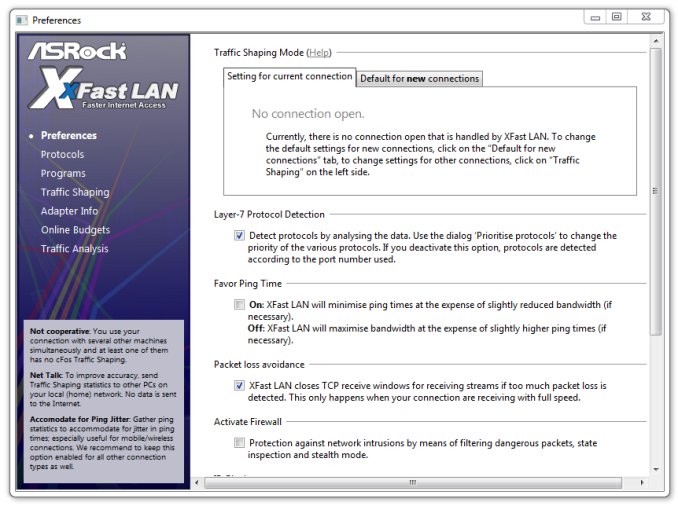














146 Comments
View All Comments
just4U - Monday, August 11, 2014 - link
I think coolermaster makes it.. Not bad, not great.. You'd be better served getting the the variant without liquid cooling (I think..) and than deciding on your own what you need.Natfly - Tuesday, August 12, 2014 - link
Garbage....you can't polish a turd.The_Riddick - Wednesday, August 13, 2014 - link
These processors really need to be running at below Intel wattage in order to be competitive, even if they tried and sold me one of these cpus for $10 I wouldn't buy one. 220W and performs worse then i5, no thanks.TiGr1982 - Wednesday, August 13, 2014 - link
Well, this same FX Piledriver certainly can run below Intel wattage (say, around 70 W for the CPU itself), but only at no more than 2.5-3.0 GHz frequency - like Opterons 6300 do.Then, it won't make a lot of sense on the desktop either :)
eanazag - Friday, August 15, 2014 - link
AMD misunderstood me.Before this product was initially released as an OEM part I had posted on an AMD article that I would be interested in a 200 W APU not CPU. I wouldn't mind an APU that could clock the GPU and CPU outrageously. I have a 300 W video card plus a 105 W Intel CPU, which the CPU is supposed to be 95 W. So a 200 W APU that comes close to both of those is a cost savings if it will clock down while idle. Plus space and heat savings.
Evidently they opted for doing it with this CPU. This is not totally bad, but between the pricing, performance, chipset features, and efficiency versus the 8350 and Intel parts it is really tough to justify. I saw numbers in there for workloads where the Haswell i3 is more than the 9590. I bought the Phenom 9600 with the errata and the CPU was fine, but I am still not willing to go that far in loyalty to AMD on the CPU side anymore. They would do better to just import the 8350/9590 silicon onto their 28 nm process. So what if it takes a clock regression as it will also have a TDP drop. They really need to do a better job updating their chipsets. This is less forgivable than their CPU line. That old, crappy 9590 would look better with a new chipset (PCIe 3 at least).
0ldman79 - Monday, August 18, 2014 - link
I've been running AMD in my desktops as a primary since the K6-2 (and K6-3+ mobile in a desktop if anyone remembers that gem).That being said, I have to call the current generation as AMD's version of the Pentium 4. I have an FX6300 in my main gaming PC. While it does well, it just isn't up to par with Intel's offerings.
I've been keeping an eye out for the next version of the AM3+ performance line and found that I've pretty much got it.
Uh... what?
AMD's flagship performance socket, AM3, has pretty much been dropped completely with all focus towards hot dual cores (seriously, that is what they are) with some rather nice integrated graphics. While I've sold several of these to my business customers I'm seriously considering jumping to Intel for my rigs.
The biggest reason is I've always had an upgrade path with AMD. It was always easy to keep building a new AMD as I'd have a couple of generations of CPU available to a platform and some of my parts from the previous system would cross. It was rarely ever a 100% replacement, more a long term evolution.
My next system will likely require a new motherboard to replace what is to me a fairly new board. With AMD effectively dropping the AM3 line just after I got onboard, I've got a sour taste in my mouth.
Those Core i7 are looking better. AMD has done this to themselves.
They took their IT customers, those that tell everyone else what to buy, told them about this awesome new CPU on the AM3 platform, the ultimate of the Bulldozer line, walked them out blindfolded for the big reveal, then walked away. We're standing there in a field of nothing with a blindfold on looking like jackasses.
That is what I think of AMD's current roadmap.
Cryio - Tuesday, August 19, 2014 - link
The absolutely BEST game for CPU benchmarking remains Crysis 3.I don't know why they use Tomb Raider and Company of Heroes which both are CPU agnostic. Not to mention that F1 series just hates AMD CPUs for whatever reason.
Games that really use the CPU: Crysis 3, Hitman Absolution, Assassin's Creed IV (I think). GRID 2, or really any mainline DIRT games. Hell, even Watch Dogs.
If any of those games that know how to properly use more than 2-4 cores were tested then this AMD beast would wipe the floor with those i3s.
Budburnicus - Wednesday, January 14, 2015 - link
LMAO!Just laughing at "This AMD "beast" would wipe the floor with those i3s." - You used beast to describe AMD's flagship product, and then talked about proper software coding allowing it to wipe the floor - wiiith i3s! LOL! just LOL!
I really am not sure if you were being sarcastic or actually meant that, but I hope it was sarcasm!
nctritech - Monday, October 20, 2014 - link
I just got an FX-9590 and an ASUS M5A99FX PRO R2.0 motherboard to go with it. I closely examined available Intel options and chose this chip. Most of the comments here put down this chip and AMD because Intel has higher-performing options and most of those comments are completely missing one vital factor: PRICE. I got this combo for $355 tax + shipping. Even if you go with the previous generation of Intel's flagship CPU, the i7-3770K, Newegg has them TODAY for $330. Hmm, that's almost as much as I paid for the FX with a brand new motherboard! Same story for the i7-4770K at $335.I walked away during a CPU sale special paying $220 total for the FX-9590 chip. It's faster in video compression benchmarks than EVERY desktop Intel chip EXCEPT the X-series i7 chips. It runs with or near the 3770K and 4770K in almost every other benchmark, possibly excluding games.
For those of you jeering at "efficiency" and praising how much faster Intel's Haswell chips can be, I wish you the best...but I'll be able to get an SSD, better RAM, or a nicer graphics card because I have $100 extra in my pocket, all while enjoying roughly the same performance as the Intel chips you've formed a cult around. Best of all, there's no LGA socket with extremely fragile pins to void my warranty; you know, when you return a mobo and they refuse to honor your return because "user-caused CPU socket pin damage" even though it was sent back because a nearby defective power component visibly burned up. Plus, did you know that CPUs only use their TDP worth of heat when you're taxing them to the maximum constantly? Who knew?!
You can have your lower performance-per-currency-unit chips and theoretical efficiency, I'll take the best overall deal, thanks!
Jinx50 - Sunday, November 2, 2014 - link
I agree enthusiast's are rarely concerned with power consumption. I quote a user i encountered who stated My Haswell is more energy efficient "meanwhile they have their rig picture with 3 Titans running in 3 way SLI for their avatar". Pure derp and a grasping desperately for the one and only straw they have in regards to downplaying the FX lineup. It's obviously neither price or performance, or multitasking for that matter.I've just become accustomed to tuning them out like annoying kids at the pub.